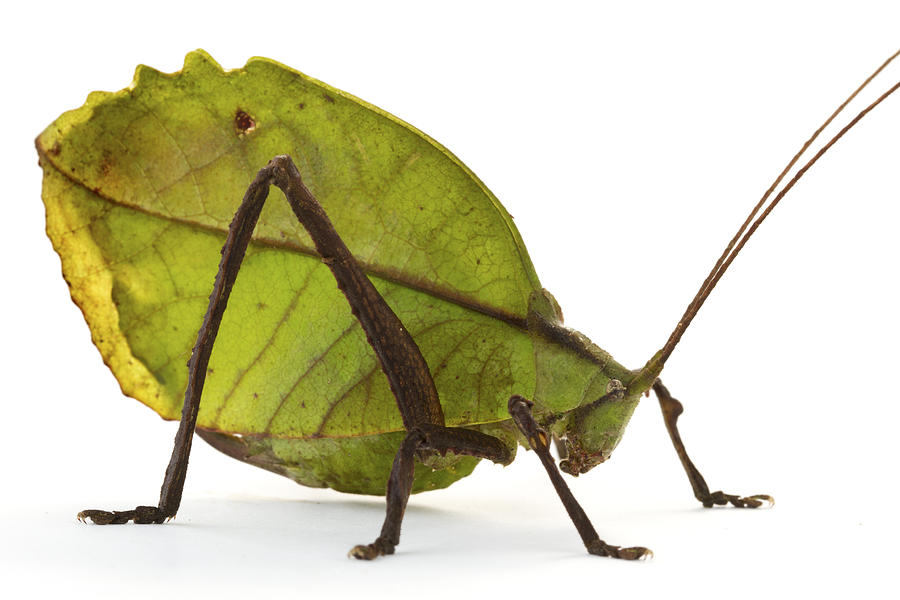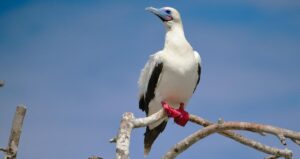In the lush and diverse ecosystems of Belize, a fascinating creature silently blends into its surroundings, mastering the art of deception like no other. The Leaf-mimicking Katydid, with its uncanny ability to camouflage itself as a leaf, stands out as a testament to nature’s ingenious adaptations. This remarkable insect not only escapes the eyes of predators but also plays a vital role in the delicate balance of Belize’s biodiversity. Let’s delve into the world of this master of disguise and unravel the secrets behind its survival tactics and ecological significance.
Nature’s Illusionist: How the Leaf-mimicking Katydid Perfects Its Camouflage
The Leaf-mimicking Katydid’s camouflage is a marvel of evolution, finely tuned over millennia to mimic the appearance of a leaf with astonishing precision. Its body shape, coloration, and even texture mimic that of a leaf to the point where it becomes nearly indistinguishable from its botanical counterparts. This remarkable adaptation serves multiple purposes, primarily aiding in the katydid’s survival by allowing it to evade predators effectively.
At first glance, the Leaf-mimicking Katydid appears as a nondescript leaf among the foliage. Its body is elongated and flattened, resembling the shape of a leaf, complete with veins and serrated edges that mimic those found on real leaves. The coloration varies depending on the environment, ranging from vibrant green to brown, matching the hues of surrounding foliage with remarkable accuracy. Some species even have patterns that mimic leaf damage or discoloration, further enhancing their disguise.
However, the katydid’s camouflage goes beyond mere appearance. Its behavior adds another layer of deception, as it sways gently in the wind like a real leaf, further fooling potential predators. This dynamic mimicry makes it incredibly challenging for predators to detect the katydid among the foliage, giving it a significant advantage in avoiding detection.
The intricate details of the Leaf-mimicking Katydid’s camouflage extend to its physical features as well. Its body surface often has a matte texture, resembling the surface of a leaf, while its legs are adapted to resemble leaf stems, adding to the illusion of a detached leaf. Some species even have extensions that mimic leaf petioles, further enhancing their disguise and making them virtually invisible to predators that rely on visual cues.
Overall, the Leaf-mimicking Katydid’s ability to perfect its camouflage through a combination of physical traits, coloration, behavior, and texture is a testament to the ingenuity of nature’s designs. This adaptation not only aids in its survival but also showcases the complexity and beauty of evolutionary strategies in the natural world.
Survival Tactics: Insights into How This Insect Evades Predators in Belize’s Ecosystem
The Leaf-mimicking Katydid’s survival in Belize’s diverse ecosystems hinges on a series of ingenious tactics that allow it to evade predators effectively. From its deceptive camouflage to its strategic behavior, every aspect of this insect’s survival strategy is finely tuned to ensure its continued existence in a world teeming with potential threats.
One of the primary survival tactics employed by the Leaf-mimicking Katydid is its ability to blend seamlessly into its environment through camouflage. By mimicking the appearance of a leaf, complete with coloration, texture, and shape, the katydid becomes virtually invisible to predators that rely on visual cues to locate prey. This camouflage not only helps it avoid detection but also allows it to remain hidden in plain sight, even amidst dense foliage.
Additionally, the katydid’s behavior plays a crucial role in its survival. It adopts a cautious approach to movement, often swaying gently in the wind like a real leaf. This dynamic mimicry not only enhances its camouflage but also confuses predators by mimicking natural movements within the environment. Predators that rely on detecting movement or identifying prey based on distinct patterns are easily misled by the katydid’s subtle swaying, further increasing its chances of survival.
Furthermore, the Leaf-mimicking Katydid is adept at exploiting its environment for protection. It often positions itself among real leaves, using them as additional cover to augment its camouflage. This strategic placement makes it even more challenging for predators to single out the katydid from its surroundings, adding another layer of defense to its survival strategy.
Overall, the Leaf-mimicking Katydid’s survival tactics reflect a sophisticated understanding of its environment and the predators within it. By combining deceptive camouflage, strategic behavior, and environmental exploitation, this insect has mastered the art of evading predators in Belize’s rich and diverse ecosystems.
Final Thoughts
The Leaf-mimicking Katydid stands as a testament to the intricate dance of adaptation and survival in Belize’s vibrant ecosystems. Through its remarkable camouflage, strategic behavior, and adept use of the environment, this insect has carved out a niche where deception becomes its greatest ally against the ever-watchful eyes of predators.
As we unravel the secrets behind the Leaf-mimicking Katydid’s survival tactics, we gain a deeper appreciation for the complexities of nature’s designs. Its ability to mimic a leaf with such precision and finesse highlights the evolutionary arms race between predator and prey, where deception often holds the key to survival.
Moreover, the katydid’s role in Belize’s ecosystem extends beyond mere survival. By evading predators and blending seamlessly into its surroundings, it becomes a crucial component in maintaining the delicate balance of biodiversity. Each katydid that escapes predation contributes to the resilience and stability of the ecosystem, showcasing the interconnectedness of all living beings in the web of life.
In a world where survival often hinges on adaptation and camouflage, the Leaf-mimicking Katydid exemplifies nature’s ingenuity and resilience. It reminds us that even the smallest and seemingly inconspicuous creatures play a vital role in the intricate tapestry of life, shaping ecosystems and contributing to the richness of our natural world.
As we marvel at the Leaf-mimicking Katydid’s mastery of disguise, let us also reflect on the broader lessons it teaches us about resilience, adaptation, and the beauty of biodiversity. In this insect’s silent presence among the foliage, we find a profound appreciation for the wonders of nature and the endless possibilities of evolution.




